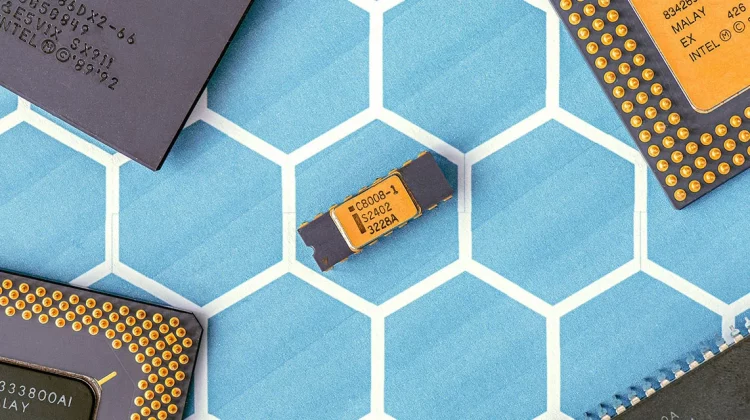One of the most powerful claims surrounding blockchain technology is its ability to prevent data tampering. From financial transactions and medical records to digital identities and supply chain data, blockchain promises an unprecedented level of trust through its immutability and transparency. But how exactly does blockchain ensure that data, once recorded, cannot be maliciously altered? And can it truly deliver on that promise?
This article explores the technical principles and mechanisms that make blockchain resistant to tampering, while also examining its real-world reliability and limitations.
1. Understanding Immutability in Blockchain
In simple terms, immutability means that once data is written, it cannot be changed or erased. In the context of blockchain, this immutability applies to each block of data once it has been validated and added to the chain.
Every blockchain is a chronological series of data blocks, each linked to the previous one using cryptographic hashes. Any attempt to change the data in one block would break the link and render the entire chain invalid—unless the majority of the network agrees to the change (which is nearly impossible in secure public blockchains).
This immutability is not just theoretical. It is built into the very architecture of the blockchain protocol.
2. How Blockchain Prevents Data Tampering
Blockchain achieves tamper resistance through a combination of cryptography, consensus mechanisms, and decentralized structure. Here’s how:
a. Cryptographic Hashing
Each block contains a cryptographic hash of:
- The previous block’s data
- A timestamp
- A list of validated transactions
- A unique nonce (in Proof of Work systems)
A hash is like a digital fingerprint: even a tiny change in the block’s data will produce a completely different hash, instantly revealing tampering.
b. Linking Blocks Together
Because each block includes the hash of the block before it, all blocks are mathematically chained. Altering one block requires recalculating the hashes for all subsequent blocks—an impractical task on most blockchain networks.
c. Distributed Ledger System
The blockchain ledger is not stored on a central server. Instead, it exists on thousands of nodes around the world. Each node holds a copy of the full blockchain.
If someone tries to alter their local copy, the rest of the network will immediately recognize the discrepancy and reject the change.
d. Consensus Mechanisms
Blockchain networks use algorithms like Proof of Work (PoW) or Proof of Stake (PoS) to agree on the state of the ledger. Any modification would require control of more than 50% of the network’s computational power or staked tokens—a near-impossible feat for well-established blockchains like Bitcoin or Ethereum.
3. Real-World Applications of Blockchain’s Anti-Tampering Features
The ability to preserve data integrity has major implications across industries:
- Finance: Immutable transaction records reduce fraud, auditing costs, and accounting discrepancies.
- Healthcare: Patient records can be securely stored and verified without risk of unauthorized alterations.
- Supply Chain: Blockchain enables end-to-end tracking of goods, ensuring data cannot be manipulated at any stage.
- Legal and Compliance: Digital contracts, certifications, and timestamps can be stored in a tamper-proof format, enhancing transparency.
In each case, blockchain acts as a trusted, neutral source of truth.
4. Can Blockchain Be Hacked or Manipulated?
While blockchain itself is extremely secure, no system is absolutely immune to risk. There are scenarios in which the data entered into the blockchain may still be incorrect or misleading, even if it cannot be changed afterward.
Key considerations include:
- Garbage in, garbage forever: If false or malicious data is entered into the blockchain, it remains immutable—even if it’s wrong. Blockchain cannot verify the truthfulness of external data.
- 51% attacks: On smaller blockchains, if one party gains control over the majority of the network, they can rewrite parts of the ledger. This is why decentralization and network size matter.
- Smart contract bugs: Errors in code can be exploited, and while the blockchain itself remains immutable, flawed logic can cause financial or data losses.
- Off-chain vulnerabilities: Data sources (oracles, human inputs, IoT devices) can be manipulated before reaching the blockchain.
In short, blockchain ensures data cannot be altered once recorded, but it cannot prevent bad data from being recorded in the first place.

5. Enhancing Tamper-Proofing Through Best Practices
To fully leverage blockchain’s tamper-resistance, developers and organizations must adopt complementary measures:
- Data verification before entry: Use reliable oracles, automated checks, and trusted sources to ensure integrity at the input stage.
- Code audits and smart contract testing: Rigorously test all on-chain logic before deployment.
- Use of public blockchains: Larger, decentralized networks are far harder to attack than private or permissioned ones.
- Multi-signature controls and governance: Prevent unauthorized changes by requiring consensus from multiple trusted parties.
- Decentralized identity and access management: Protect who can interact with the system and under what conditions.
Conclusion
Blockchain’s decentralized structure, cryptographic security, and consensus-based validation make it one of the most tamper-resistant technologies ever developed. Once data is recorded on a properly designed and decentralized blockchain, altering it becomes virtually impossible without detection.
However, blockchain is not a silver bullet. Its effectiveness at preventing data tampering depends on how well the system is designed, how trustworthy the data sources are, and how responsibly it is governed.
In a world where data authenticity is increasingly critical, blockchain offers a powerful foundation for trust. But like all tools, it must be applied thoughtfully and with awareness of its strengths and limitations.
















































